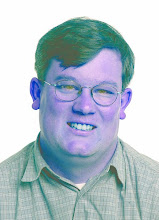Peter Kormann: Southern Connecticut's Olympic medalist gymnast
The men on the 1976 U.S. Olympic squad believed this was going to be their year to shock the gymnastics world. The all-around team event was going to be the ideal setting to do what some thought was impossible.
However, the dreams of earning a medal ended due to what the U.S. camp felt was unjust judging by the Eastern Bloc countries.
The bitter aftertaste of a disappointing seventh-place finish still lingered three days later when the Southern Connecticut State junior took to the mat in the floor exercise.
Kormann wasted little time sending a message that he wasn’t messing around with a crowd-pleasing opening routine, including a full-twisting, double-back mount to garner a score of 9.8, matching the best of the competition. When the final numbers were crunched, Kormann finished third to earn a bronze medal and make history as the first U.S. male gymnast to win an Olympic medal in 44 years.
“It was some solace for the low showing of our team,” Kormann said shortly after. “We felt, as a team, that we could get the bronze medal, but we considered the scoring very poor on the part of the judges.
Read Jim Fuller's complete story.
Labels: 1976, Gymnastics, Olympics, Peter Kormann, Southern Connecticut
 RSS
RSS































